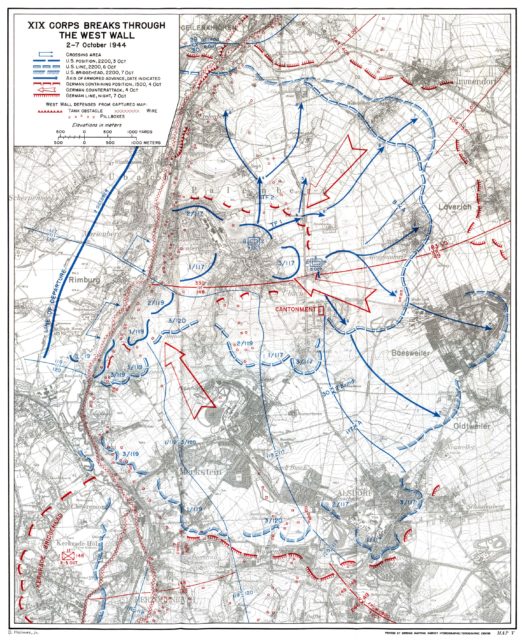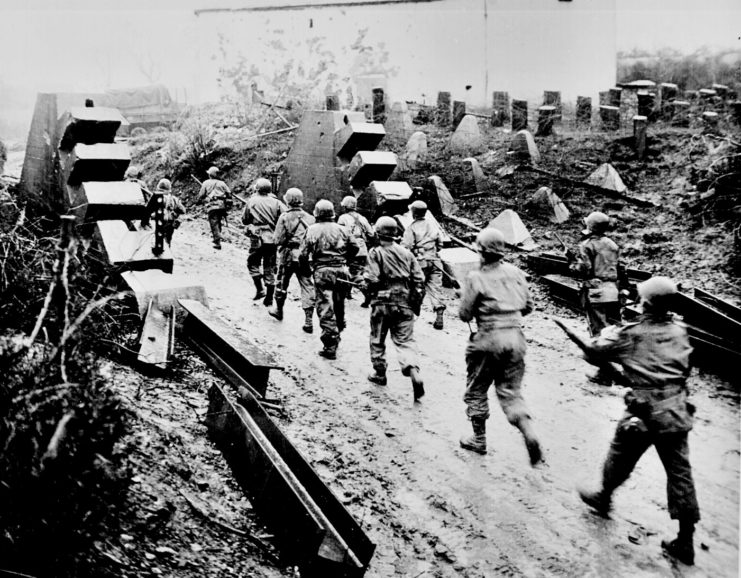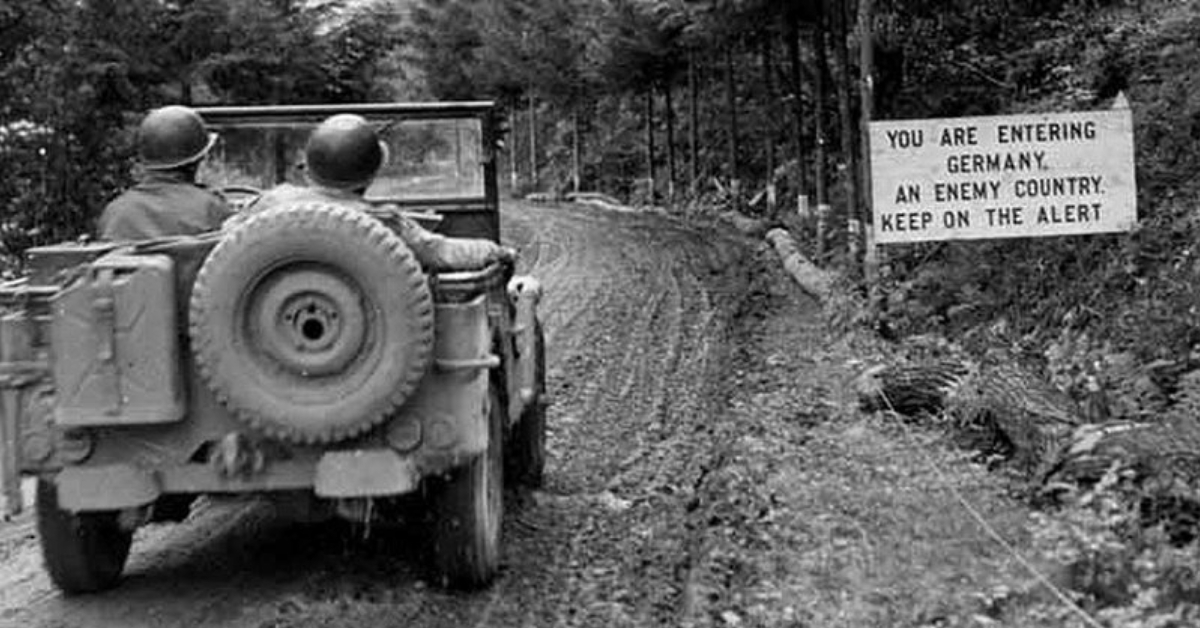On Monday, September 11, 1944, an event of powerful symbolic importance took place. An American patrol crossed the border into Nazi Germany. They were the forerunners of the Allied invasion that would end WWII. They represented the rise of one great power and the fall of another. Their action showed how far the tide of war had turned.
Yet for all its symbolism, it was a strangely anti-climactic event.
Passing Through Luxembourg
It had been three months since the D-Day landings when Allied troops had poured onto the beaches of Normandy and opened a new front in the west. Through hard fighting, they had driven the Germans back across France. They wanted to keep up the momentum. Their aim was nothing less than the total defeat of Germany and an end to Hitler’s brutal regime.
By September 11, the US 5th Armored Division had reached Luxembourg. Within hours, they had liberated the Grand Duchy, one of Europe’s tiniest countries. It had happened so fast the soldiers barely realized what they had done.
The 5th Division sat on the border of Germany.
Shelling Germany
There was rivalry among the Americans for the distinction of being the first into Germany. It would be an achievement and one that would earn them pride and a place in history.
The 1st Infantry Division were lining up to be the winners of that race. They claimed to be the first US troops to open fire in both World Wars and the first to land on Omaha Beach. They were approaching Germany via the Aachen region. Their gunners claimed to have already fired shells into Germany, becoming the first Allied ground forces to attack the country directly.
However, if they hoped to be the first into Germany, they were about to be disappointed.

Holzinger’s Patrol
On the afternoon of September 11, Lieutenant Vipond of the 5th Armored Division stood on the wooded slope overlooking the River Our. Across the water lay Germany. The goal was in sight.
Vipond was the lieutenant of the 5th’s Troop B, 85th Reconnaissance Squadron. With him was Warner L. Holzinger, his staff sergeant.
Vipond ordered Holzinger to take a patrol across the river and scout out Germany. If they brought back valuable information, there would be medals. If they hurried up and got across the border first, there would be enormous prestige.
There were five men in the patrol. Aside from Holzinger, there was a French officer, Lieutenant Lille, who could act as interpreter, Corporal Ralph Diven, Technician 5th Grade Coy Locke, and Private First Class George McNeal.
Watching from the Shadows
Cautiously, the patrol headed down the slope to the river. There were hamlets on both sides – houses in which soldiers might be hiding. As the day drew toward its end, there was no sign of life. Holzinger had no idea how many German forces might be in the area.
From the shadows of the riverbank, they watched for signs of the enemy. Five men were preparing to enter an empire that Hitler had said would last a thousand years. The Germans had proved how fiercely they could fight.
Crossing the River
At last, they decided to cross. The 18th-century bridge that once spanned the river had been destroyed. The only way across was to get wet.
Holzinger entered first, carbine held ready in case of trouble as he waded into the shallows. The others followed him. All the way across, they watched the bank on the German side. Nothing stirred. No gunfire came their way. At last, drenched to the hips, they stepped out of the river and into Germany.
They were the record breakers.

Bunkers
It was then they realized they had been crossing in front of a carefully camouflaged German bunker. If it had been occupied, they would all have been dead.
As they set out for the hamlet of Gmuend, they saw more defensive bunkers. Each one they passed was deserted. So was Gmuend itself. Past the hamlet, they carried on up a steep hillside. The woods to their right were filled with more bunkers. It was the Siegfried Line, a vast defense network Hitler had created in the event of an attack from France. Holzinger and his companions were walking through one of the most spectacular feats of military engineering in the world.
Nothing but Dust
It was a strange sight. The woods were filled with concrete emplacements, but each one had been abandoned. There were no guns, no supplies, no men. Spiders webs grew across the doorways and carpets of dust lay on the floors.
At one bunker, they found a local farmer had built a chicken coop amid the rusted barbed wire. He too had moved on.
What Holzinger saw reflected the state of much of the Siegfried Line. Earlier in the war when Germany had conquered France, there had been no more reason to defend the border. The line had been abandoned, its buildings locked, its troops and guns moved on. Other parts of the Line were being hastily prepared to face the Allied advance but not at Gmuend.
The First Since Napoleon?
It was cold and dark on the heights above the River Our. Rather than linger there waiting for the Germans to return, the patrol headed back down the slope and across the river. They had learned little, but they had earned their place in history.
Vipond argued that, in crossing the river, Holzinger and his men were the first Allied soldiers to enter Germany in wartime since Napoleon. It was a tenuous claim, given incidents such as the Polish invasion of East Germany after WWI but it was still a moment of great symbolic importance.
The Allies had entered Hitler’s homeland. His downfall was approaching.
Source:
Charles Whiting (1999), West Wall: The Battle for Hitler’s Siegfried Line
